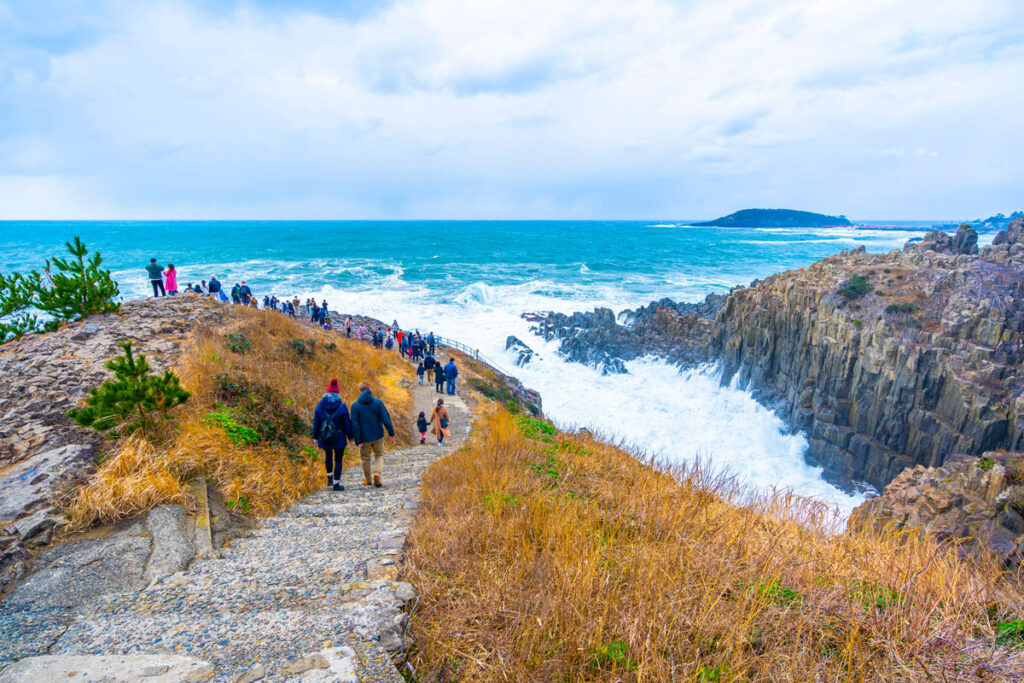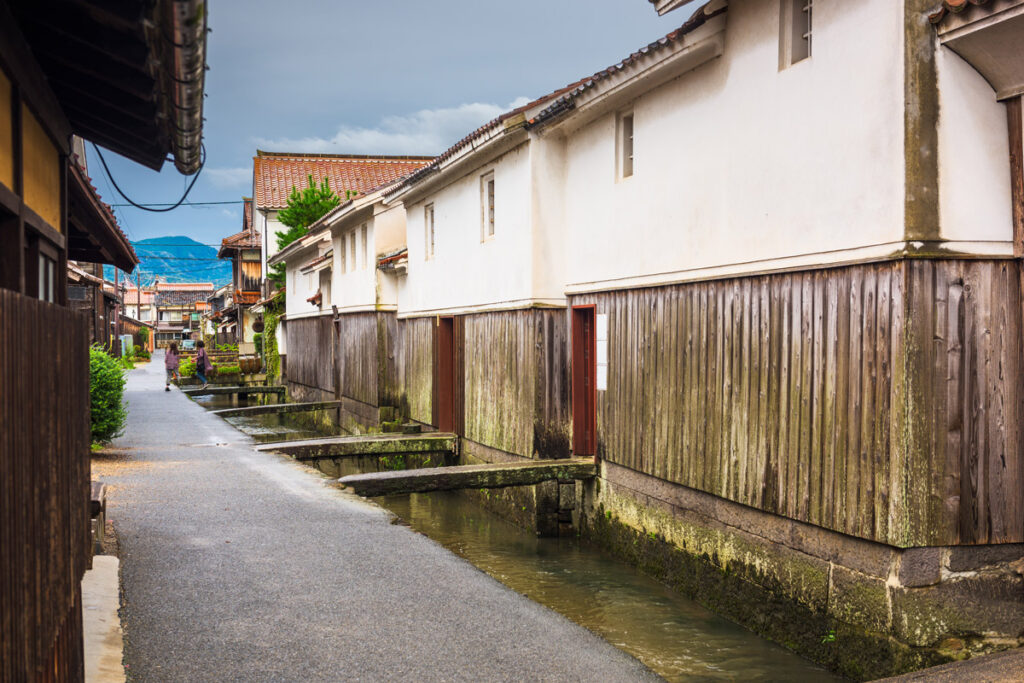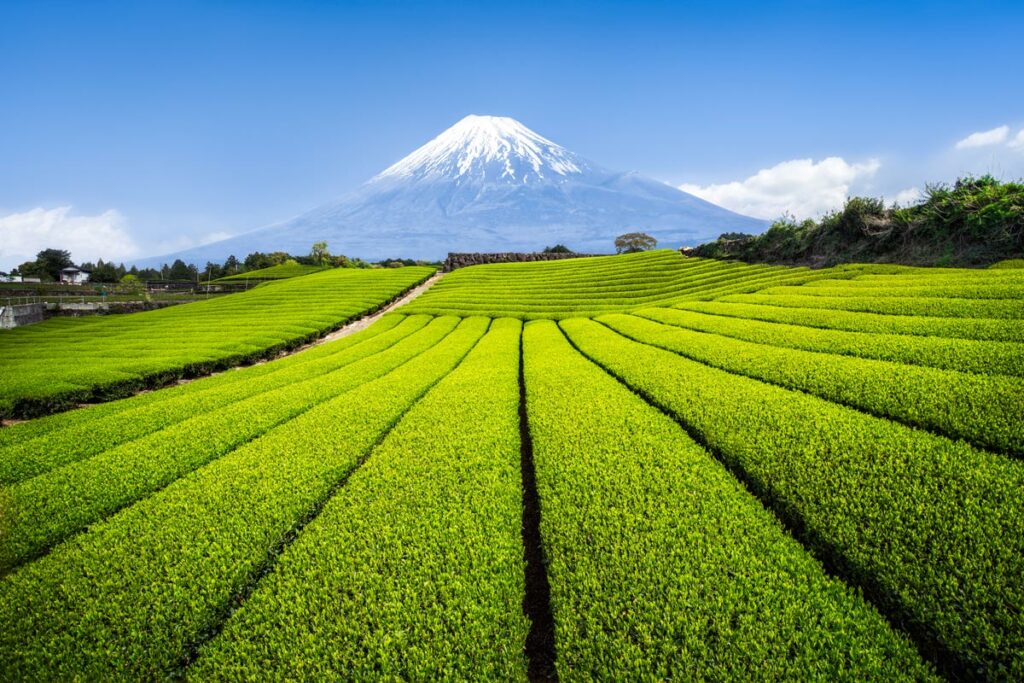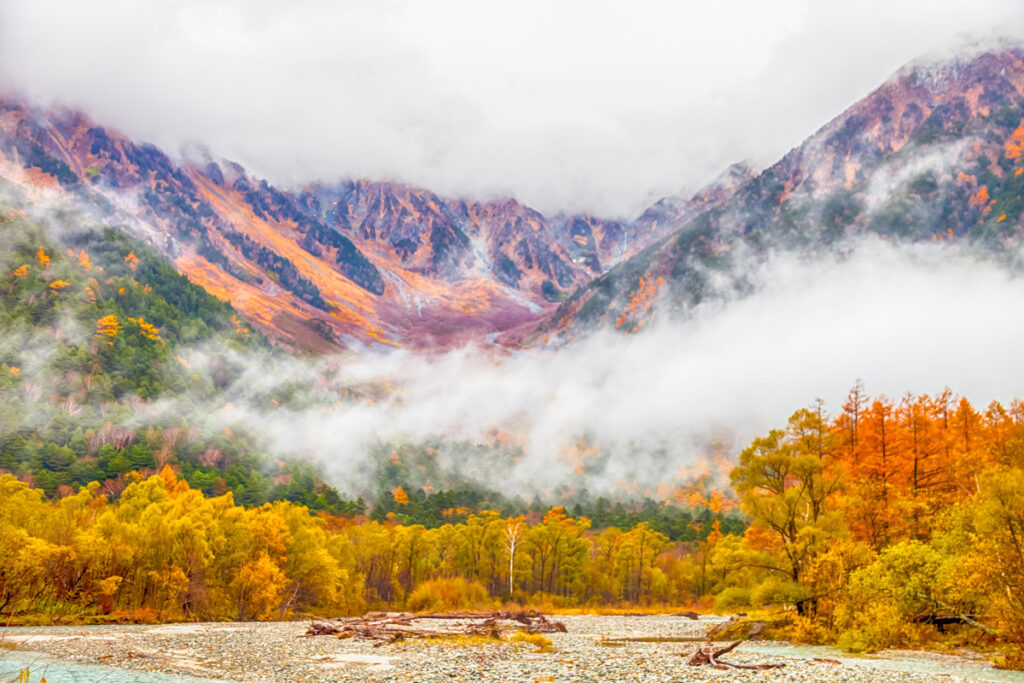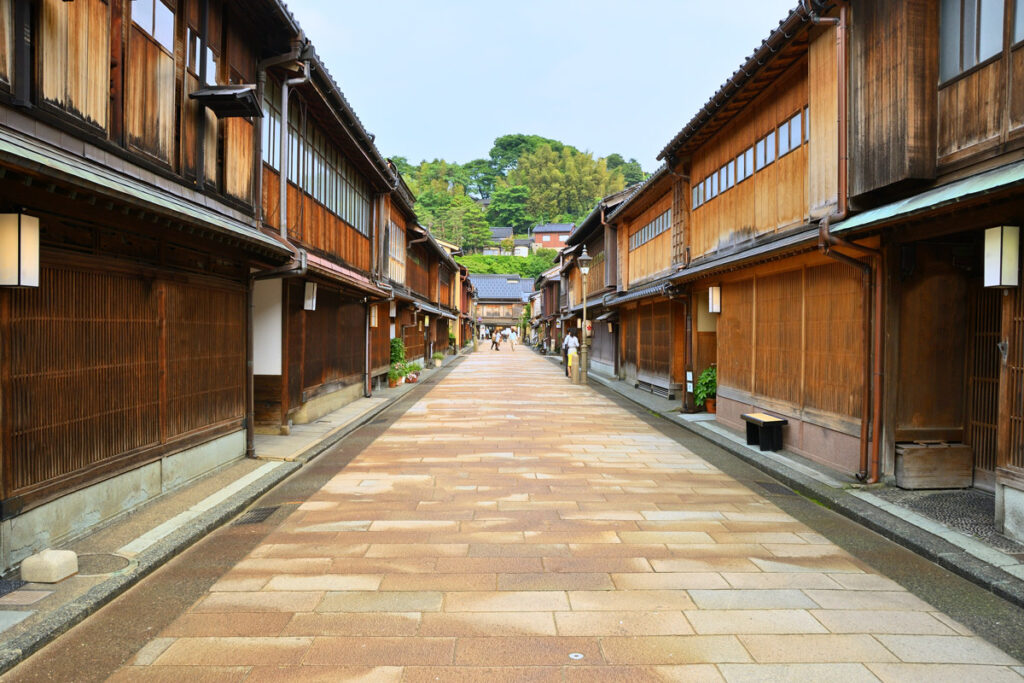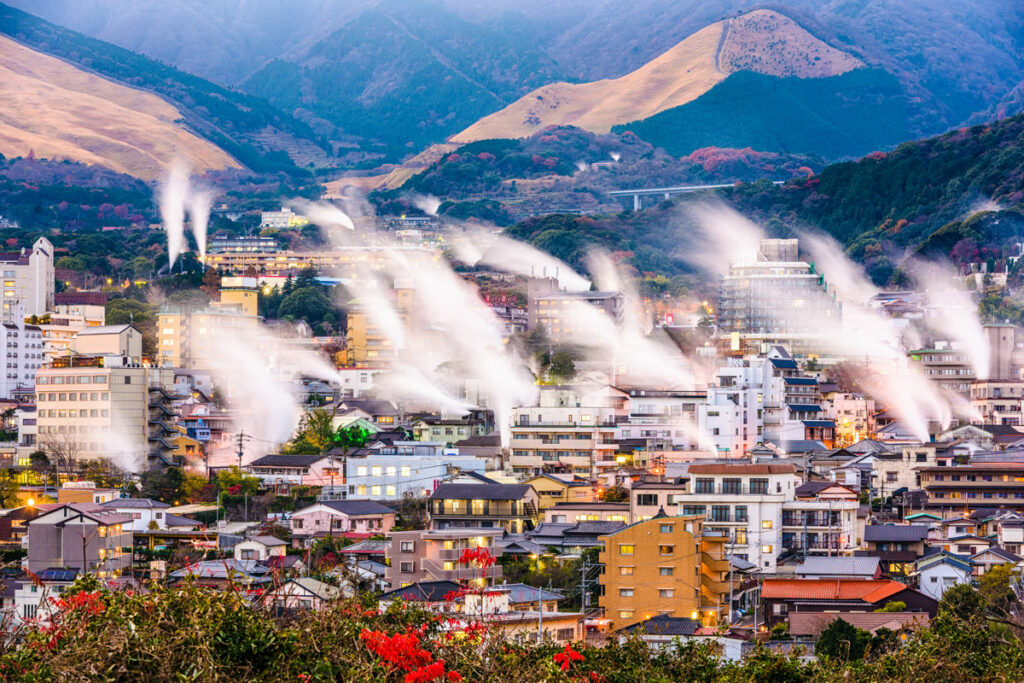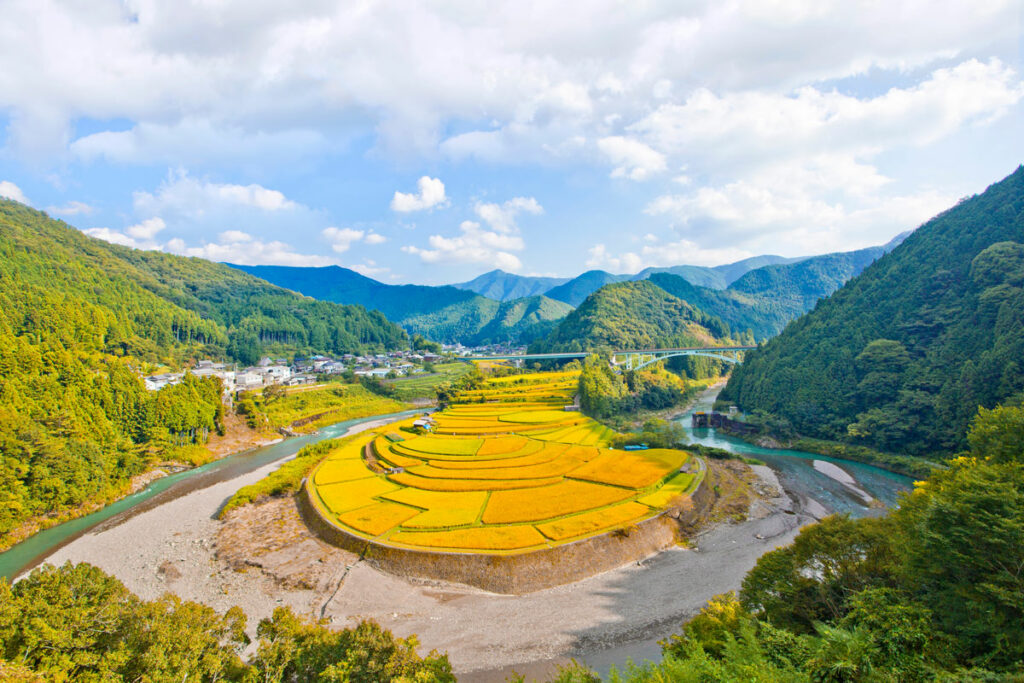Hey there! Welcome to our newest blog post where we’re about to take a deep dive into Japan’s Chubu Region, specifically checking out the cool spots of Fukui Prefecture. Fukui Prefecture is barded with the Ishikawa Prefecture, Gifu Prefecture, Shiga Prefecture and Kyoto Prefecture. If you’re thinking about heading to this magical corner of Japan, boy, do we have some treats for you! Our funky guide to Fukui is jam-packed with the top 12 best things to do in Fukui, making sure you don’t miss out on the best bits this place has to offer.
Snuggled up between some stunning mountains and the Sea of Japan, Fukui is this awesome mix of nature’s best, historical gems, and cultural treasures. So, whether you’re into digging up the past, getting your nature fix, or just chilling in a peaceful spot, Fukui’s got your back. We’re going to walk you through all the cool places you gotta check out in Fukui, making it an trip you won’t forget. From the breathtaking Tojinbo Cliffs to the chill vibes of Daihonzan Eiheiji Temple, each spot is a promise of something epic.We’ll help you navigate through the charming streets, discover ancient castles, and even take a step back in time at the renowned Fukui Prefectural Dinosaur Museum.
So, whether you’re a seasoned traveler or planning your first visit to the Chubu Region, join us on this journey through Fukui Prefecture. Let’s uncover the hidden treasures and create memories that will last a lifetime!
1. Tojinbo Cliffs
Marvel at the rugged beauty of these unique geological formations by the sea, known for their columnar joints that are a natural wonder in Japan.
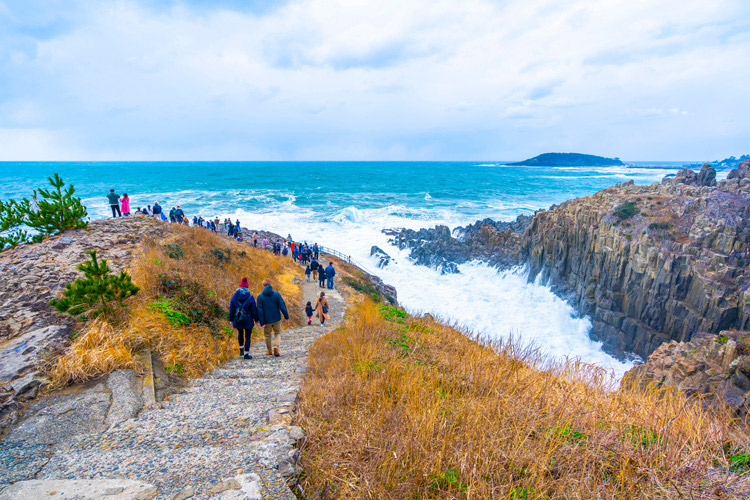
Tojinbo Cliffs offer a spectacular natural wonder along the coast of Fukui Prefecture, where the forces of nature have sculpted the landscape into a masterpiece of columnar joints. These rugged, basaltic formations tower over the Sea of Japan, creating a dramatic and awe-inspiring view that has captivated visitors for centuries. The cliffs are not only a testament to geological beauty but also a site of deep cultural and historical significance, weaving tales of legends and lore into the fabric of Fukui’s heritage.
To truly appreciate the grandeur of the Tojinbo Cliffs, embarking on a Tojinbo Sightseeing Cruise is a must. This journey by boat offers a unique perspective, allowing you to gaze up at the towering cliffs from the tranquil waters below. As you glide along the coastline, the cruise reveals the intricate details of the cliffs’ structure, the diverse marine life, and the sheer scale of nature’s artwork. The sightseeing cruise provides an intimate experience with the natural beauty of the area, complemented by the soothing sounds of the sea and the refreshing sea breeze.
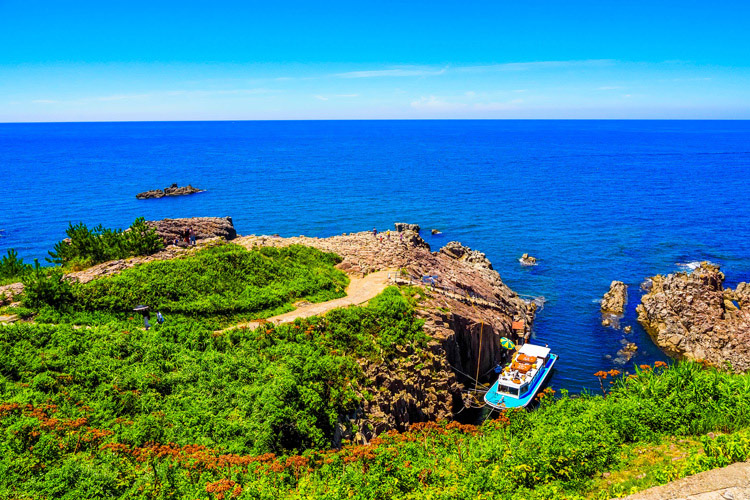
Combining the majestic views from atop the Tojinbo Cliffs with the serene experience of the sightseeing cruise offers a comprehensive and unforgettable exploration of one of Fukui Prefecture’s most iconic landmarks. This dual perspective ensures that visitors leave with a deep appreciation of the natural beauty and geological wonder that Tojinbo represents.
2. Fukui prefectural dinosaur museum
Dive into the prehistoric past at one of Asia’s largest dinosaur museums, perfect for families and paleontology enthusiasts.
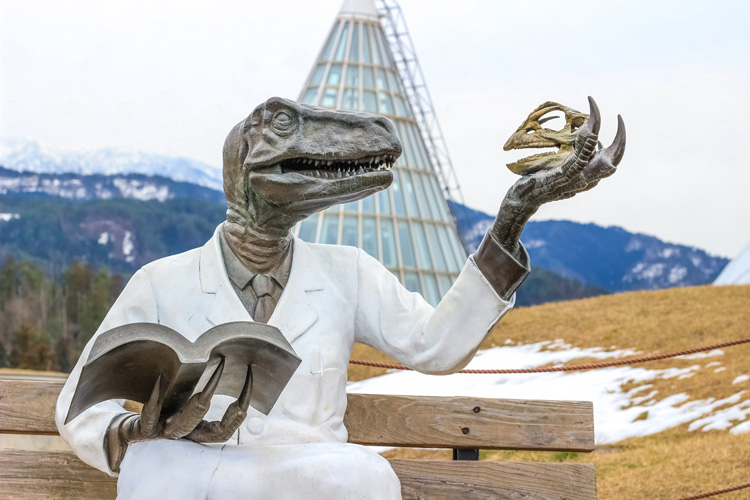
Fukui Prefectural Dinosaur Museum beckons travelers to immerse themselves in a world where giants once roamed, particularly at the sites near the Hokuriku region. Nestled in the serene town of Katsuyama, this museum is celebrated as one of Asia’s premier dinosaur museums, offering an extensive collection that captivates both the young and the young at heart.
Upon entering, visitors are greeted by a fascinating array of dinosaur skeletons, each telling a story millions of years old. The museum’s dynamic displays, including realistic dioramas and interactive exhibits, bring the prehistoric world to life, making it an educational haven for paleontology enthusiasts.
Families venturing here will find the museum’s layout particularly engaging. Children can partake in hands-on activities such as fossil digging simulations, igniting a spark for learning about these ancient creatures. The museum’s research center is also a hub of scientific discovery, often unveiling new findings from the local dinosaur excavation sites—some of the richest in Japan.
Strategically located amidst nature, the museum’s architecture blends with the surrounding landscape, offering a seamless transition from the modern world into the age of dinosaurs. With its rich educational content and interactive exhibits, the Fukui Prefectural Dinosaur Museum is a journey through time, providing a unique and memorable experience that echoes long after the visit.
3. Daihonzan eiheiji
Experience the serenity and architectural splendor of this ancient Zen temple, a spiritual center surrounded by age-old cedar trees.

Daihonzan Eiheiji Temple, a revered site nestled in the forests of Fukui, offers a tranquil retreat to those seeking peace and spiritual enrichment. Founded in 1244 by Zen Master Dogen, this temple stands as a bastion of Zen Buddhism, its teachings resonating through the halls and corridors for nearly eight centuries.
As you approach, a canopy of ancient cedar trees guides you to the temple’s entrance, whispering tales of the past. The temple’s architecture is a marvel, showcasing the elegant simplicity and harmony characteristic of Zen principles, which are deeply ingrained in the historical fabric of Kyoto. Visitors are often awestruck by the sprawling complex of over seventy structures, meticulously constructed without a single nail, reflecting the ingenuity of medieval Japanese craftsmanship.
Eiheiji is not only a historical monument but a living monastery. It serves as a training ground for monks who engage in daily practices of meditation and mindfulness, preserving the rituals that have been handed down through generations. Visitors are welcome to observe or participate in meditation sessions, offering a glimpse into the monastic lifestyle.
For the traveler seeking a moment of repose, Eiheiji Temple provides a unique opportunity to experience the essence of Zen, surrounded by nature’s beauty and the enduring legacy of spiritual pursuit.
4. Echizen ono castle
Perched atop a hill, this castle offers panoramic views of the city and is famously known as the ‘castle in the sky’ during misty mornings.
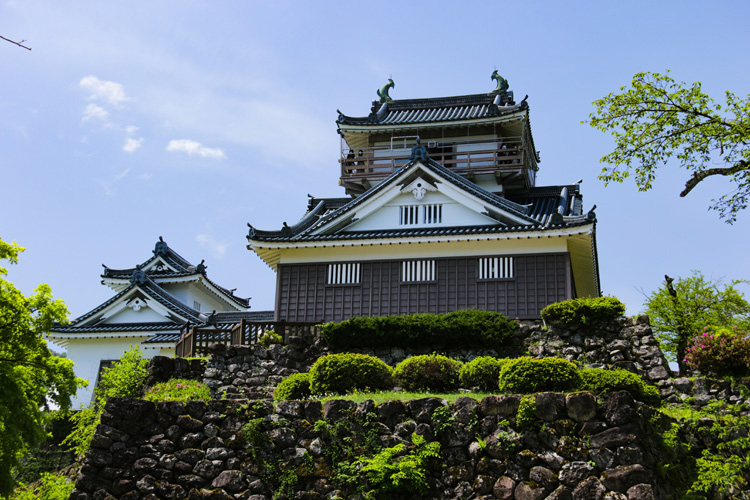
Echizen Ono Castle emerges like a vision from the mists, earning its moniker as the ‘castle in the sky.’ This majestic fortress, perched on Kameyama Hill, presides over the city of Ono, providing sweeping panoramic views that have enchanted visitors for centuries. On misty mornings, a common occurrence in this region, the castle appears to float on clouds, a phenomenon that attracts photographers and romantics alike.
Originally constructed in the 16th century, the castle has witnessed the ebb and flow of Japanese history. Though the current structure is a reconstruction, it faithfully preserves the aesthetic and atmosphere of the Sengoku period, offering a tangible connection to the past.
The ascent to the castle is a journey through time, as travelers navigate paths lined with traditional lanterns and cherry trees that burst into bloom in spring. The climb culminates in the castle’s observation deck, which affords a 360-degree vista of Ono and the surrounding Echizen province.
Visitors to Echizen Ono Castle can explore the history-laden halls and exhibits that display samurai armor and artifacts, providing context to the castle’s storied past. This hidden gem offers a serene, almost otherworldly experience, inviting you to step back in time and above the clouds.
5. Katsuyama castle
Step back in time with a visit to this beautifully reconstructed castle, which also houses a museum detailing the region’s samurai history.
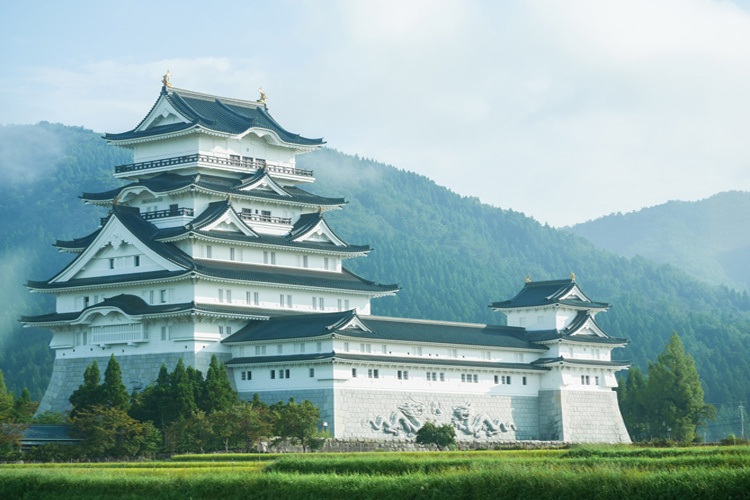
Katsuyama Castle, a prime example of a historically significant castle town in Fukui., a carefully reconstructed fortress, stands as a testament to Japan’s rich feudal history. Located in the heart of Katsuyama, a city steeped in the legacy of the samurai, the castle offers a profound glimpse into the martial culture of Edo-era Japan.
Visitors stepping through its gates are transported to an era where the samurai code of honor was a way of life. The castle itself, a reconstruction faithful to historical designs, is complemented by modern amenities that make history accessible to all ages. Within its walls lies a museum, a treasure trove that chronicles the region’s samurai history through an impressive collection of artifacts, armor, and weaponry.
The museum not only showcases the martial prowess of the samurai but also offers insights into their daily lives, arts, and philosophies, painting a comprehensive picture of this iconic warrior class. The castle’s strategic vantage point atop a hill also provides visitors with stunning views of the city and the lush Fukui landscape.
For history buffs and curious travelers alike, Katsuyama Castle is a cultural journey, offering an immersive experience into the world of the samurai, amidst the serenity and beauty of a castle that has stood the test of time.
6. Yokokan garden
Find tranquility in this traditional Japanese garden, where you can enjoy the changing seasons by the koi-filled pond and tea houses.
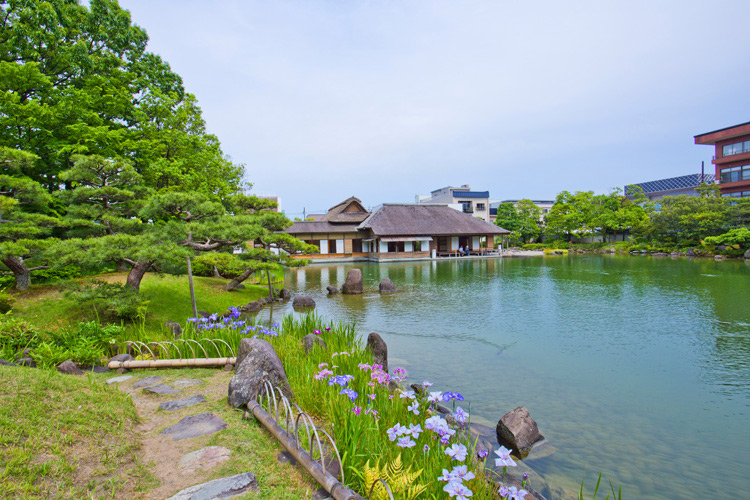
Yokokan Garden is a serene oasis that epitomizes the tranquil beauty of traditional Japanese landscapes. Situated in the heart of Fukui city, this garden is a harmonious retreat for those seeking a moment of peace amidst their travels. As you wander along its well-tended paths, the garden unfolds into a tableau of nature’s artistry, designed to reflect the aesthetic principles of sukiya-zukuri architecture.
Each step within the garden reveals meticulously crafted scenes where stone lanterns, elegantly pruned trees, and carefully raked gravel coalesce into a restful harmony. Central to the garden’s allure is the koi-filled pond, alive with the vibrant colors of the fish that glide beneath its surface, a symbol of grace and longevity in Japanese culture.
The garden’s tea houses are a nod to the cultural practice of tea ceremony, offering a space for contemplation and hospitality. Surrounded by the natural beauty of the garden, these tea houses provide a sensory experience where one can savor matcha tea while embracing the seasonal shifts, from cherry blossoms in spring to fiery maples in autumn.
Yokokan Garden is not just a location but an experience, inviting visitors to embrace the subtle changes of nature and find a quiet joy in the elegance of its landscape.
7. Tojinbo tower
Get a bird’s eye view of the coastline and the Tojinbo Cliffs from this observation tower, a perfect spot for photography.
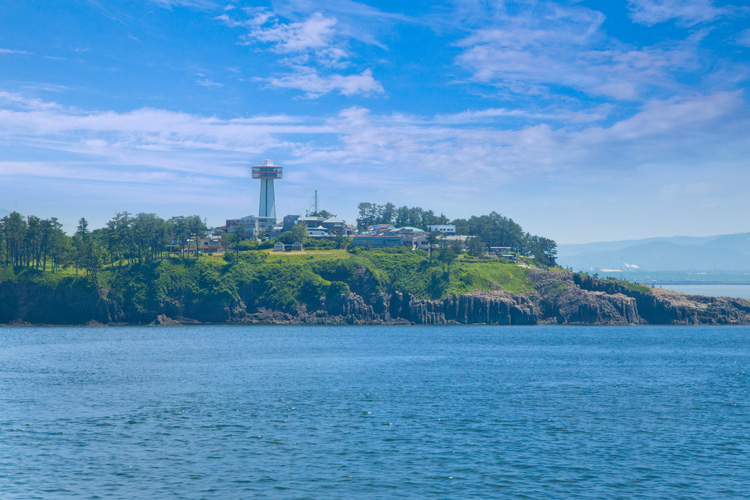
Tojinbo Tower offers a unique vantage point to absorb the stunning coastal scenery that defines the region. This observation tower, standing as a beacon near the famed Tojinbo Cliffs, allows visitors to ascend and capture the splendor of the Sea of Japan from an elevated perspective.
Photographers and nature enthusiasts alike find this tower a haven, as it provides a bird’s eye view, especially stunning when observing the layout of traditional castle towns from above. of the rugged cliffs and the endless horizon beyond. The observation deck is the perfect place to witness the dramatic interplay of light and shadow as the sun travels across the sky, casting ever-changing hues upon the waters and the geological marvels below.
A visit to Tojinbo Tower is more than a simple sightseeing stop; it’s an opportunity to fully appreciate the natural beauty and geological significance of the cliffs that have stood the test of time. The tower itself is strategically placed to afford the best photographic opportunities, ensuring that every snapshot is a keepsake, a moment frozen in time, of the grandeur of the Japanese coastline.
For travelers seeking to enrich their journey with panoramic views and breathtaking photography, Tojinbo Tower is an indispensable addition to any Fukui itinerary.
8. Tsuruga red brick warehouse
Soak in the historical ambiance of this charming shopping and dining area set in renovated red brick warehouses.

Tsuruga Red Brick Warehouse, a reminder of the prosperous trade that flowed through the Hokuriku region and the port towns. It is a delightful blend of history and modernity, where old storage spaces have been transformed into a vibrant shopping and dining destination. Situated in the coastal town of Tsuruga, this complex is a striking example of adaptive reuse, maintaining the industrial charm of its past while serving contemporary needs.
As you stroll through the warehouse, the rich red bricks tell tales of a bygone era, creating a warm, inviting atmosphere. Within its walls, a variety of shops offer unique goods, from local crafts to souvenirs, perfect for travelers seeking authentic keepsakes. The area is not just a shopper’s paradise but also a culinary delight. The dining options range from casual cafés to gourmet restaurants, each presenting an opportunity to indulge in local flavors and international cuisine.
The Tsuruga Red Brick Warehouse isn’t merely a place to visit; it’s an experience that captivates the senses. The mix of historical architecture with modern flair makes it a picturesque spot that appeals to both history buffs and those looking for a leisurely day out. With its scenic harbor location, the warehouse also offers a view of the peaceful waters, adding to the overall ambiance and allure of this unique attraction.
9. Ichijodani asakura ruins
Explore the archaeological site of the once-prosperous Ichijodani town, home to the Asakura clan during the Sengoku period.
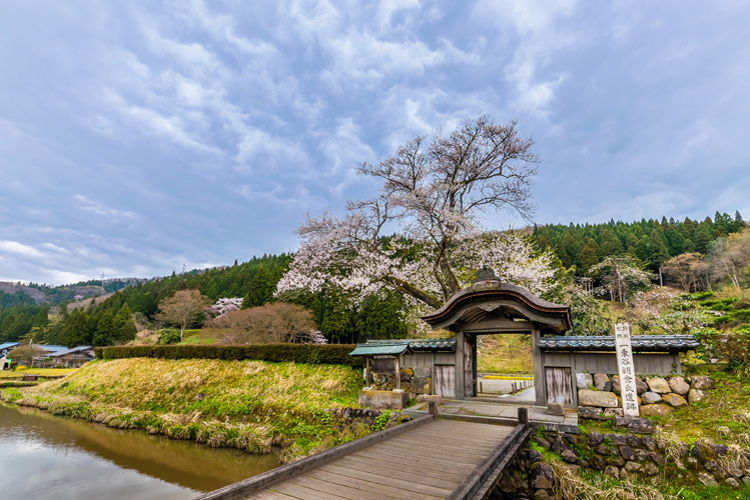
Ichijodani Asakura Ruins serve as a captivating portal to the Sengoku period, where the echoes of a once-flourishing settlement still resonate. This archaeological site in Fukui Prefecture unveils the remnants of the prosperous Ichijodani town, which thrived under the rule of the Asakura clan for over a hundred years.
Today, visitors can traverse the site, walking along the same paths that samurai once patrolled. The ruins are meticulously preserved, showcasing the foundations of residences, samurai estates, and even gardens that provide a glimpse into the sophisticated lifestyle of the era. The area has been partially reconstructed, including the imposing Asakura clan residence, allowing one to envision the town’s former glory.
The Ichijodani Asakura Ruins are not only an educational journey into the past but also a picturesque experience, with the surrounding valley’s natural beauty providing a tranquil backdrop. As you explore the stone walls and excavated structures, informative signs offer insights into the daily lives, culture, and traditions of the townspeople who once called this valley home.
For history enthusiasts and casual explorers alike, a visit to the Ichijodani Asakura Ruins is an enlightening excursion into Japan’s storied past, bridging the gap between the ancient world and the present day.
10. Maruoka jo castle
Known as the ‘Mist Castle,’ this is one of the oldest surviving castles in Japan, offering a glimpse into the feudal era.

Maruoka Jo Castle, fondly referred to as the ‘Mist Castle,’ is an enduring symbol of Japan’s rich feudal history. Located in Fukui Prefecture, it is celebrated as one of the oldest surviving castles in the country, a proud testament to the architectural ingenuity of the Edo period.
The castle’s nickname stems from the local legend that a thick mist appears to protect the castle during times of enemy threat. This mystique, coupled with its historical significance, makes Maruoka Jo Castle a fascinating destination for history buffs and cultural enthusiasts alike.
As visitors approach the castle, they are greeted by the imposing yet elegant structure, which stands atop a hill surrounded by cherry blossoms in spring. The castle keep (Tenshukaku), made primarily of wood, has withstood the test of time and still retains its original form, offering an authentic glimpse into the feudal era.
Inside, the castle houses a small museum displaying samurai armor, weapons, and local artifacts, providing a deeper understanding of the period’s history and culture. The narrow staircases and wooden interiors evoke a sense of stepping back in time, while the castle’s observation deck offers panoramic views of the surrounding town and countryside.
Visiting Maruoka Jo Castle is more than a historical excursion; it’s an immersive experience into the legacy of Japan’s samurai warriors and a chance to appreciate the enduring beauty of traditional Japanese architecture.
11. Kehi no matsubara beach
Relax on the picturesque sandy shores of this scenic beach lined with pine trees, a popular spot for swimming and barbecues.
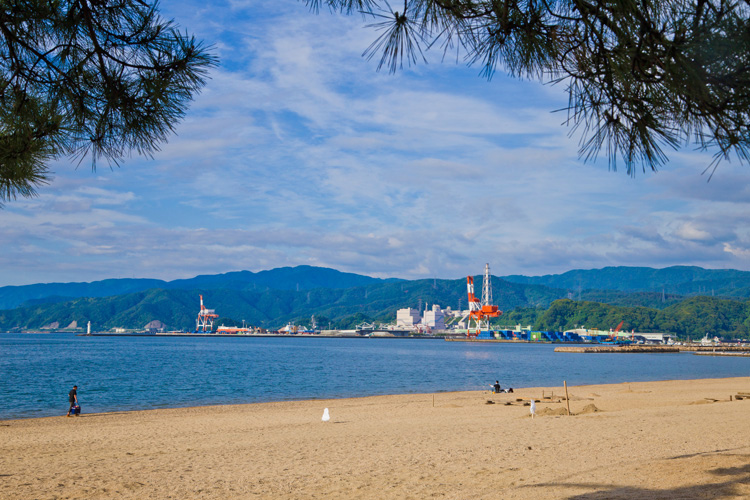
Kehi no Matsubara Beach is a picturesque coastal gem, renowned for its expansive sandy shores and serene pine tree backdrop. Located in Tsuruga City, this beach is a popular destination for those seeking relaxation and a touch of nature’s beauty.
As you step onto the beach, the soft, golden sands invite you to unwind and soak in the peaceful atmosphere. The beach stretches invitingly, bordered by a lush pine grove that not only adds to the scenic beauty but also provides a natural shade canopy, perfect for those warm summer days.
Kehi no Matsubara is more than just a place to bask in the sun; it’s a hub for recreational activities. The calm and clear waters make it an ideal spot for swimming, appealing to families and water enthusiasts alike. Additionally, the beach is equipped with barbecue facilities, making it a favored spot for picnics and gatherings. Imagine grilling fresh seafood while the sound of waves provides a soothing soundtrack to your beach day.
This beach is not only celebrated for its natural allure but also for its cultural significance, often featured in Japanese poetry and paintings. Whether you’re looking to swim, sunbathe, or simply enjoy a leisurely stroll along the shore, Kehi no Matsubara Beach offers a perfect blend of natural beauty and recreational fun.
12. Rainbow line summit park
Drive or take the cable car to this mountaintop park, and be rewarded with stunning vistas of the surrounding landscape and the sea.
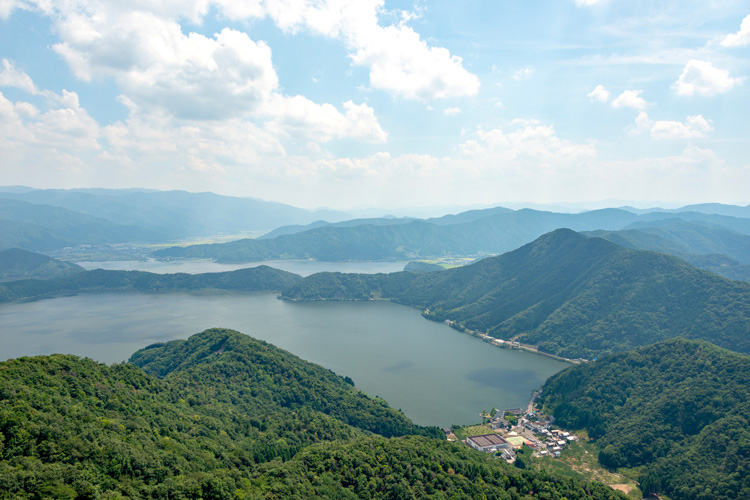
Perched atop the Mikata Five Lakes region, Rainbow Line Summit Park offers breathtaking panoramic views of one of Fukui’s most scenic landscapes. Located along the Rainbow Line scenic road, this mountaintop park is a hidden gem where visitors can admire the crystal-clear lakes, rolling green hills, and the vast Sea of Japan stretching beyond the horizon. Whether you’re here for photography, relaxation, or a scenic escape, the park provides one of the best vantage points in Fukui Prefecture to take in the diverse beauty of the Hokuriku Region.
The summit is accessible via a cable car or chairlift, both of which provide a leisurely ride up the mountain, revealing stunning aerial views of the Mikata Five Lakes below. Once at the top, visitors can explore well-maintained observation decks, footbaths, and charming wooden benches that encourage travelers to soak in the breathtaking scenery. The park also features a cozy café and open-air terrace, allowing guests to enjoy a relaxing cup of coffee while admiring Fukui’s stunning landscapes.
Each season transforms Rainbow Line Summit Park into a completely different spectacle. Spring brings vibrant cherry blossoms, summer offers clear blue skies, autumn paints the surrounding hills in brilliant red and orange hues, and winter blankets the area in a serene layer of snow, making every visit unique. Whether you’re traveling through Fukui on a road trip, seeking a peaceful retreat, or looking for the perfect scenic viewpoint, Rainbow Line Summit Park is an unmissable destination that showcases the natural wonders of Fukui Prefecture.
Where to Stay in Fukui for Sightseeing
Finding the perfect place to stay can elevate your travel experience, and Fukui Prefecture offers accommodations ranging from luxurious ryokans to budget-friendly hotels, catering to every type of traveler. Here’s a closer look at our top picks across three categories: Luxury, Mid-Range, and Budget.
Luxury Accommodations
Kanetomo – For those seeking an opulent stay, Kanetomo Ryokan near Tsurugi Shrine and Echizen Crab Museum provides a luxurious escape. Immerse yourself in traditional Japanese hospitality with tatami rooms and onsen baths, enhancing your cultural experience. This ryokan is ideal for visitors wanting to explore local attractions like the Echizen Togei Museum and Active House Echizen, all within proximity.
Sekisuien Hotel – Located in the heart of Gujo, Sekisuien Hotel offers a blend of comfort and convenience, equipped with modern amenities such as flat-screen TVs, refrigerators, and air conditioning. Its proximity to Anyoji Temple, Kajiyacho, and Gujo Hachiman Castle makes it a prime choice for travelers keen on exploring local heritage sites.
Seiunkaku Ryokan – Nestled in Awara, Seiunkaku Ryokan is renowned for its charming ambiance and close access to delightful dining spots and attractions like Awara Onsen Ashiyu. Guests can enjoy free wifi, on-site dining, and the rejuvenating sauna, making it a memorable stay for relaxation seekers.
Mid-Range Accommodations
Hotel Route Inn Takefu Inter – Conveniently located near Michi no Eki Echizen Takefu and Meijo Farm Farm Stand, this hotel is a great mid-range option offering comfort and accessibility. It’s perfect for travelers looking to explore the local markets and specialty shops.
Kitaguni Grand Hotel – Situated in Tsuruga, this hotel is close to landmarks like Kehi Shrine and offers amenities including air conditioning, baggage storage, and fitness facilities. Its location is ideal for those visiting the Fukui Atomic Energy Science Museum, providing a blend of leisure and learning opportunities.
Budget Accommodations
Hotel Akaboshitei – For budget-conscious travelers, Hotel Akaboshitei offers a comfortable stay near attractions such as Kako Satoshi Furusato Ehonkan Raku and Takefu Public Hall Memorial Museum. With its strategic location, guests have easy access to explore the rich history and culture of Fukui.
Hotel Cooju Fukui – Located in Sakai, this hotel provides affordable accommodation without compromising on quality. Nearby attractions like Maruoka Castle and Kasumigajo Park are easily accessible, making it a convenient base for exploring the area’s historical sites and natural beauty.
Frequently Asked Questions
What are some top attractions in Fukui Prefecture?
Fukui Prefecture, nestled along the Sea of Japan, is often overlooked but brimming with attractions. Maruoka Castle, famed for its cherry blossoms and historic aura, the stunning Tojinbo Cliffs with their unique geological formations, and the serene Eihei-ji Temple, a center of Zen Buddhism, are must-visits. Don’t miss the Ichijodani Asakura Clan Ruins for a fascinating glimpse into Japan’s feudal past.
What are some top attractions in Fukui Prefecture?
Fukui Prefecture, nestled along the Sea of Japan, is often overlooked but brimming with attractions. Maruoka Castle, famed for its cherry blossoms and historic aura, the stunning Tojinbo Cliffs with their unique geological formations, and the serene Eihei-ji Temple, a center of Zen Buddhism, are must-visits. Don’t miss the Ichijodani Asakura Clan Ruins for a fascinating glimpse into Japan’s feudal past.
Can you recommend any shrine or temple to visit in Fukui?
Absolutely! The Eihei-ji Temple is one of the two main temples of Soto Zen Buddhism in Japan and offers visitors a peaceful and spiritual experience amidst ancient architecture surrounded by forest. Another notable shrine is the Shibata Shrine in Fukui city, which is deeply rooted in local history and offers a tranquil escape.
Are there any unique natural formations to explore around Fukui?
Fukui is home to some breathtaking natural formations. The Tojinbo Cliffs are a striking series of rocks along the coast that have been sculpted by the sea into unique shapes over millions of years. Nearby, the Mikata Five Lakes offer stunning landscapes and a palette of changing colors depending on the season and time of day.
What activities can visitors enjoy at the Mikata Five Lakes?
The Mikata Five Lakes area is great for nature enthusiasts and families. Activities include boat tours to appreciate the scenic beauty, cycling around the lakes, and visiting the Rainbow Line Mountain Park for panoramic views. The area is also known for its delicious seafood, especially crab, which is a must-try when visiting.
Is there a best time of year to visit Fukui for cherry blossom viewing?
The cherry blossom season in Fukui typically peaks around early April, making it the ideal time to visit. Maruoka Castle, known as one of Japan’s top cherry blossom viewing spots, becomes particularly magical during this period with its ancient castle surrounded by a flurry of pink blossoms.
What historical sites related to the Asakura clan can be found in Fukui?
One of the standout historical attractions in Fukui is the Ichijodani Asakura Clan Ruins. This area was once a bustling castle town during the Sengoku period and has been partially reconstructed. Visitors can explore the remains of samurai residences, a street market, and gardens, offering a unique opportunity to step back in time and experience Japan’s rich feudal history.
Are there any unique experiences to be had in Sabae City?
Sabae City, in Fukui Prefecture, is famed for its craftmanship, particularly eyeglass frames which are recognized worldwide. Visitors can tour factories and even participate in workshops to make their own pair. Additionally, Sabae is known for its beautiful Nishiyama Park, especially stunning in autumn when the leaves change color.
How accessible is Fukui Prefecture for tourists?
Fukui is more accessible than many think, especially with the expansion of Japan’s shinkansen (bullet train) network. The prefecture can be reached by limited express trains from major cities like Kyoto and Osaka. Additionally, with its location close to Kanazawa, visitors can easily explore central Japan’s highlights, combining visits to both areas.
